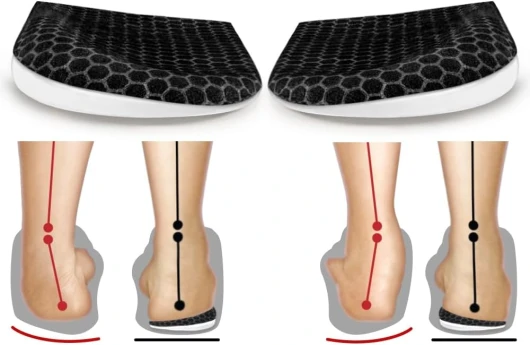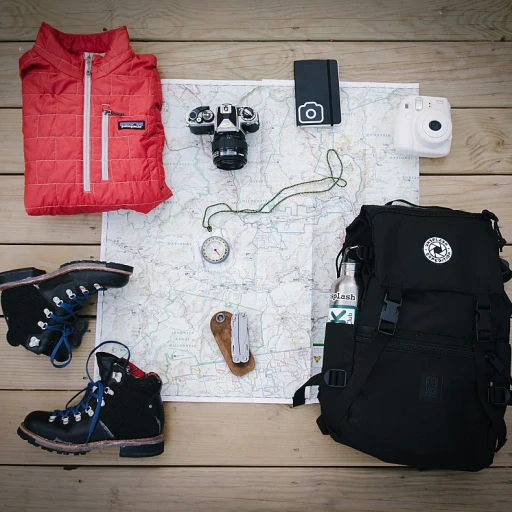
Understanding Supination in Hiking
The Phenomenon of Supination in Hiking
When you're out on the trails, your foot movement becomes a significant factor in your comfort and safety. Supination, also known as underpronation, is a dynamic that affects many hikers as they traverse varied terrains. This occurs when the foot rolls outward, leading to an uneven distribution of weight across the foot's surface. For those experiencing this, a robust solution can be crucial. Supination often ties back to foot structure, particularly high arches, where the arch doesn't adequately collapse to absorb shock. This leaves the outer edges of the feet and, predominantly, the little toes and heel to bear more impact. Over time, the excess strain can result in noticeable foot pain, ankle issues, or even plantar fasciitis. The sequel? A compromised hiking experience unless proper interventions are pursued, such as custom orthotics or insoles specifically engineered for supination. Many hikers have found solace in support insoles designed for high arches, providing the necessary arch support and pain relief crucial for this foot type. High-quality insoles supplanted into your shoes can significantly mitigate the adverse effects of supination, offering comfort and reducing risk during your hikes. While pain might be a primary motivation to explore these solutions, the drive for a more enjoyable and efficient hiking journey remains just as strong. If you'd like to dive deeper into the intricacies of enhancing outdoor experiences, consider exploring adventure-friendly footwear options tailored for demanding terrains.The Importance of Proper Foot Support
Why Supporting Your Feet is Non-Negotiable
Understanding the importance of proper foot support is essential for anyone eager to enhance their hiking experiences. Supination, where the weight rolls onto the outer edges of the feet, can lead to significant discomfort if not addressed appropriately. Investing in the right insoles is crucial to tackle this condition. Proper foot support ensures that the feet can distribute your body weight evenly, reducing the risk of pain and injury. Arch support plays a pivotal role in maintaining this balance, especially for those with high arches or flat feet. By providing stability, well-chosen insoles can alleviate common hiking problems such as foot pain and plantar fasciitis. Custom orthotics, though often burdening on the wallet with their unit price sometimes being price unavailable, are tailored to deliver a custom fit that supports specific foot needs. Alternatively, over-the-counter supination insoles with deep heel cups can offer significant relief and comfort without the customized touch. Insoles also need to prioritize heel cushioning. A deep heel cup reduces heel pain by providing a padding effect, while orthotic insoles elevate the comfort level during long hikes. Incorporating these components into your footwear can spell the difference between a painful and an enjoyable hike. If you're looking into how to choose the best insoles or even exploring various boot types, consider checking out this comprehensive guide that covers some of the top women's hunting boots for outdoor adventures. The right boots also play a critical role in conjunction with supportive insoles to ensure your hiking endeavors are pain-free and satisfying.How Supination Insoles Can Help
Transforming Your Hiking Journey with Specialized Support
Finding the right support for your feet is critical in battling issues like foot pain and discomfort caused by supination, especially during rigorous activities like hiking. Implementing orthotic insoles specifically designed for supination can significantly improve your hiking experience by providing the necessary support and alignment, reducing strain on your high arches and flat feet. Supination insoles are particularly effective in addressing the misalignment issues that lead to pain during and after hikes. They come with features such as deep heel cups that cradle the heel comfortably, enhancing balance and providing stability. This not only contributes to better posture but also aids in minimizing the risk of common hiking-related problems like plantar fasciitis. Moreover, these insoles are crafted to fit various shoe sizes and shapes. Whether it’s a custom orthotic or standard insole unit, the focus remains on maximizing comfort and support for your arches. While custom options can be tailored specifically to your foot shape, providing a bespoke experience, they can sometimes be priced higher or even priced unavailable for those on a budget. However, there are quality alternatives, ensuring that hikers can find a suitable solution without breaking the bank. The supportive design of these insoles alleviates pressure off your heel and arches, offering pain relief with every step. By investing in supination insoles, you’re equipping yourself with a tool that not only enhances comfort but empowers your hiking adventures. It's worth noting that the impact of these insoles extends beyond immediate relief, they play a pivotal role in sustaining foot health and preventing long-term injuries. To further explore how specialized gear like camo waders can enhance outdoor experiences, visit our article on exploring the versatility of camo waders. Incorporating specialized footwear solutions into your hiking routine can redefine the boundaries of adventure.Choosing the Right Supination Insoles
Essential Tips for Finding the Perfect Pair
Navigating through the options of supination insoles can be a daunting task, especially when each foot has unique requirements. With the right pair, foot pain can be significantly reduced, enhancing your overall hiking experience. Here’s what you need to consider:
- Assess Your Foot Structure: Start by evaluating your foot’s mechanics. Determine if you have high arches, flat feet, or need specific arch support. This will guide you to select insoles that provide optimal comfort and stability.
- Understand Material and Design: Look for insoles that are designed with high-quality materials. A supportive heel cup and deep heel design can offer the stability your feet need during treks. Consider insoles made from materials that support high-impact activities.
- Consider Customization: In some cases, custom orthotics may be the best fit. Custom fit insoles can cater specifically to your foot’s structure, offering tailored support that off-the-shelf insoles cannot provide.
- Evaluate Price vs. Benefits: While unit price may vary, prioritize the insole options that deliver lasting comfort and pain relief. Although sometimes the price is unavailable, investing in quality support insoles can prevent further complications, such as plantar fasciitis.
- Trial and Error: Don’t be deterred if the first pair doesn’t meet expectations. Trying different units and inserts can ultimately lead to finding the insoles supination fit for your feet.
Remember, the investment in the right insoles can transform your hiking adventures, alleviating pain and ensuring your feet are well-supported. With these considerations, kick off your search and step into a more comfortable hiking escapade.
Incorporating Supination Insoles into Your Hiking Routine
Making Supination Insoles Part of Your Hiking Gear
Once you've settled on the right supination insoles, it's crucial to ensure they become an essential part of your hiking routine. Start by properly inserting them into your hiking boots, ensuring they settle comfortably against the sole. A deep heel cup design can offer additional stabilization for your foot, reducing the risk of pain or discomfort during long treks.
Incorporating insoles designed for supination into your hiking regimen can significantly improve comfort. With each hike, your feet should experience a more evenly distributed pressure, particularly if you have high arches that previously led to pain or fatigue.
Moreover, making use of these insoles with proper arch supports can help mitigate common hiking foot issues such as plantar fasciitis and pain originating from flat feet. Custom orthotics can also be considered if off-the-shelf options don't provide the necessary support.
Regular checks and replacements are also recommended since the support levels can diminish over time. Keep track of how well they maintain their cushion and arch support, particularly after several hiking sessions. Remember that investing in quality insoles can save both discomfort and potential medical expenses in the long run, despite some products having an unavailable unit price.
Finally, listen to feedback from fellow hikers who have successfully transitioned to using supination insoles. Their real-life experiences can offer insights on common configurations or settings that might work best for different terrains or hiking durations. Equip yourself with knowledge and the right support to enjoy the trails comfortably and safely.
















